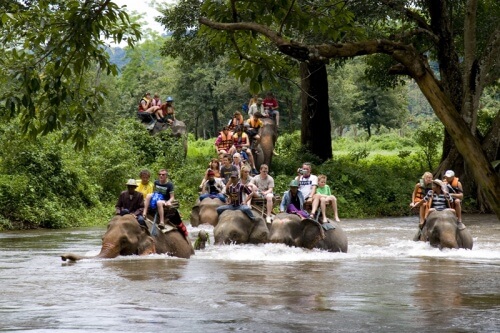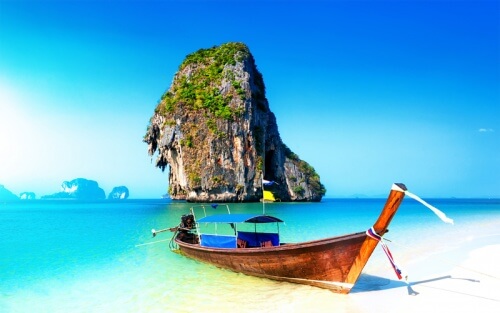
How to see elephants responsibly in Thailand
Elephants have always been a religious and cultural symbol of Thailand. Today, they remain a big draw-card for tourists, but people often don’t realise that there’s a very dark side to elephant tourism – and that the dark side can be avoided, and eventually stopped.
Before 1989, elephants were used as beasts of burden in Thailand. They worked in the logging industry to haul timber and clear forests. But when the use of elephants in the industry was banned, thousands of mahouts (elephant handlers) had to find a new way for their elephants to provide them an income.
Elephants were trained to do tricks for tourists and used for begging on the streets. This not only forced them out of their natural habitat, but led to them being mistreated and badly malnourished from a diet of spoiled vegetables and junk food. The answer to this was elephant sanctuaries, but unfortunately, not all sanctuaries put the needs of the elephants first, and the problem continues.
There is hope for these elephants though, and it’s up to tourists to turn the tide on elephant exploitation – so don’t cancel your plans to see elephants in Thailand, just keep a few things in mind when you choose your experience.
Avoid camps that offer elephant rides
As much as everyone wants to ride an elephant deep down, there just isn’t a way to do it responsibly. Although they’re naturally peaceful animals, being ridden is unnatural, and to get them to submit to it requires a violent process known as ‘the crush’.
Look for larger sanctuaries
Elephant need space, lots of it. Look for a sanctuary within their natural, forested habitat where the elephants can roam free, socialise, bathe and eat.
Look for low-impact elephant experiences
Interacting with one of these gentle giants is an amazing experience, and instead of riding one, choose an activity that the elephant will enjoy too. This way, you’ll also get a better insight into their unique personalities. One of the great things you can do with elephants is bathing. You’ll get up close and personal with the majestic giants and get to give them a nice scrub in the water – something they love. Be prepared to get dirty though!
Feeding elephants can also be a responsible activity. Twice a day, tourists are allowed to feed the elephants. You’ll be given a crate of fresh fruit, vegetables and their favourite leaves and bamboo, which you can hand to them and watch them enjoy! We like this option because it also ensures that the elephants are being fed good, fresh food.
Another elephant activity that won’t leave you feeling guilty is hiking. Sanctuaries that have large grounds allow small groups of tourists to follow the elephants and their mahouts into the mountain for a half day hike. Here, you can experience how they live naturally and watch them browse for tasty leaves and socialise. Again, activities like this help to ensure that the elephants are being treated well, by ensuring that they get lots of time to naturally enjoy the open spaces of the sanctuary.
Elephants are social and emotional creatures. Use your gut feeling when you visit a sanctuary. If you see elephants standing on the spot and swaying their heads, they’re stressed, and they probably aren’t being looked after well.
By choosing responsible options to interact with elephants, you promote their well-being. By supporting the responsible sanctuaries, you’re helping to fund the care of these beautiful animals.
https://www.directtraveller.com/blog/see-elephants-responsibly-thailand/Uncategorized




